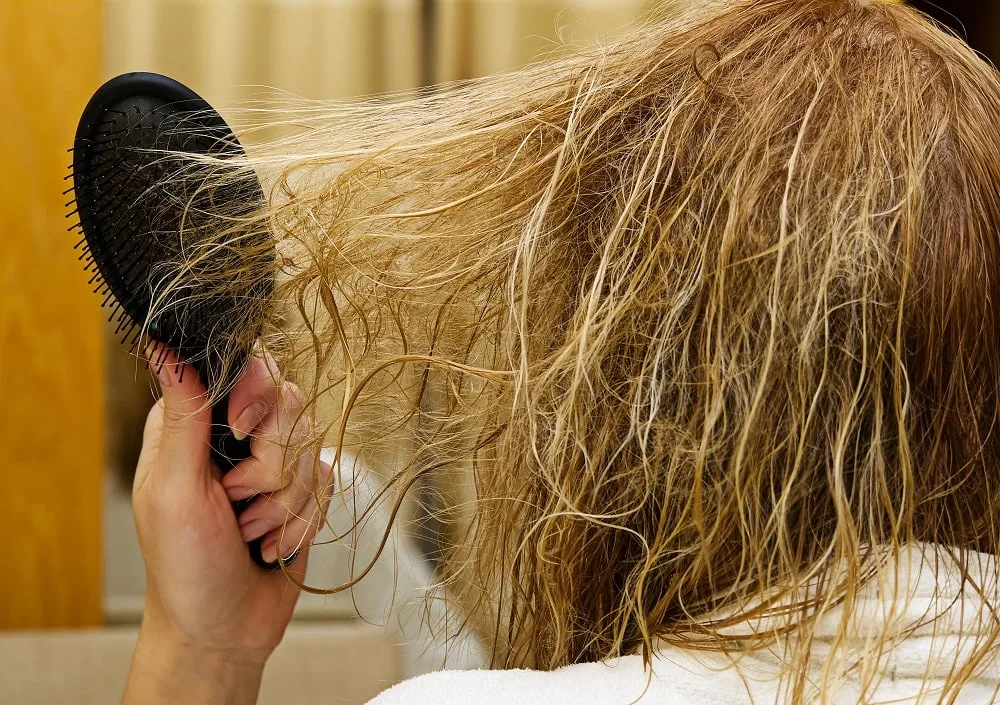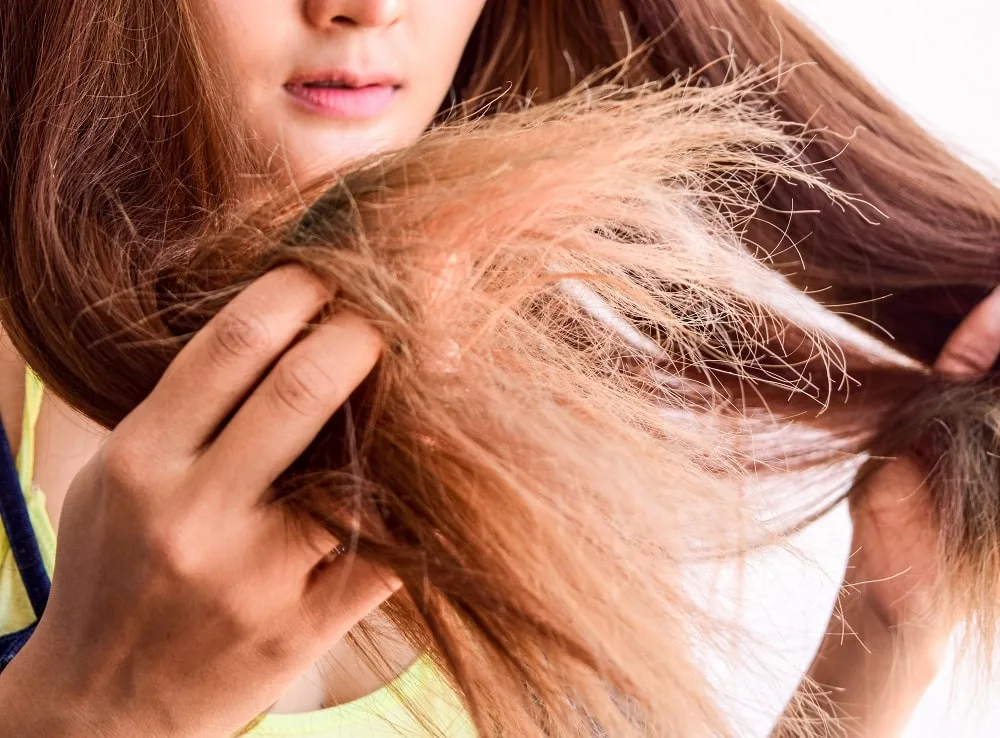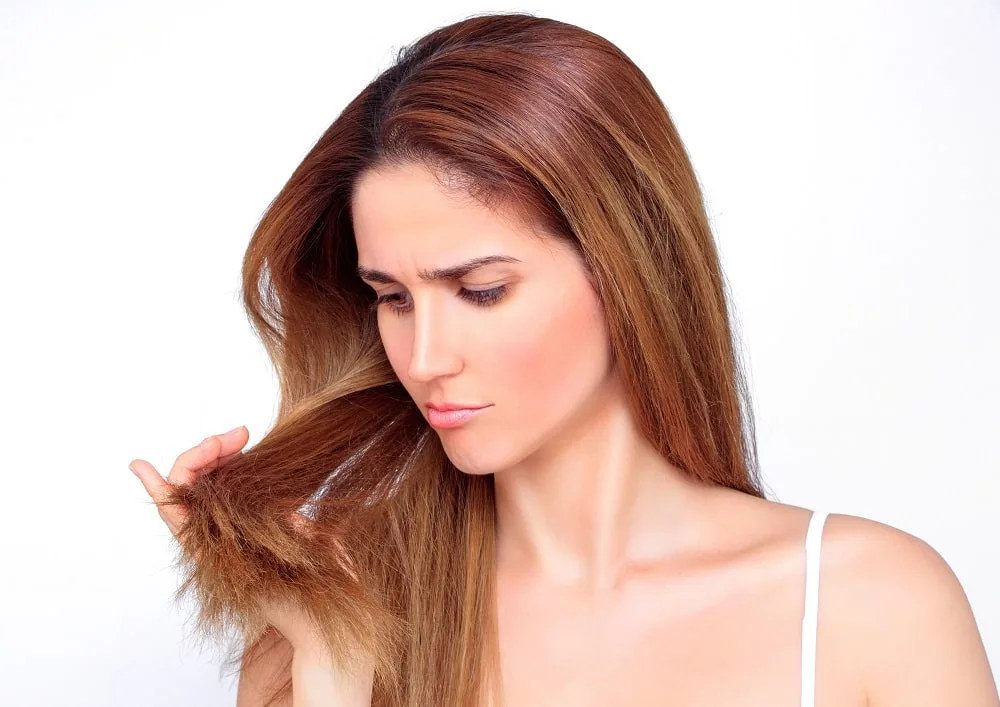Sometimes we all need a new look, and what better way to appease the need for change than changing the color and style of your hair?
Bleaching hair is one common and popular method to get a new look with a lighter hair tone.
While the temptation to drastically change the color of your hair may seem enticing, there are some warning signs that would indicate it is time to stop bleaching, and you should be on the lookout for them.
Signs You Should Stop Bleaching Your Hair
There are signs to look for if your hair is suffering from bleaching. While some of these can be corrected with various other products, continued bleaching will only worsen these problems.
Here are five signs you should be aware of. Stop bleaching your hair when you see these.
#1. Frizzy and Dry Hair

It’s no secret that any dye can cause your hair to dry out. Bleaching can be harsh and thus leave your hair feeling remarkably frizzy and brittle.
#2. Excessive Tangling

Bleached hair tends to tangle much easier due to the dry and frizzy consistency. This can cause further damage by harsh brushing. Excessive tangles such as these will require a detangling product to ease the brushing process without causing further damage.
#3. Split Ends

Split ends are quite a nuisance and are caused by dryness of the hair. Since bleaching dries the hair out, this will cause hair ends to split and even break off. Rough brushing can make this situation far worse and can lead to very damaged and broken ends.
#4. Itchy and Irritated Scalp
Drying out of the hair goes hand in hand with a dry scalp. There is an ingredient within hair dye called paraphenylenediamine (PPD) that can cause allergic dermatitis. This is the main culprit for any irritable scalps and is a good indication that you should avoid products that contain it.
#5. Dull and Fading Hair

If done correctly, bleaching your hair can have a gorgeous outcome, but in some cases, bleaching can counteract the natural oils in your hair and cause the color to become bland and dull.
If you find yourself returning to a salon or having to redye your hair frequently, it might be best to consider discontinuing bleaching and dying.
How Does Bleach Cause Damage to Hair and Scalp?
Bleaching your hair includes the process of oxidizing the melanin in your hair. This causes it to lighten in tone depending on the amount used, forcing your hair to start drying out. Sometimes the bleach can continue to dry out your hair despite using moisturizers.
Tips to Repair Overbleached Hair
If you have overbleached your hair, there are ways to mend it back to health gently. First and foremost, you want to stop bleaching your hair. The best way to nurture your hair back to health is to discontinue the leading cause of the damage.
This would also include laying off the flat irons, curling irons, and hair dryers.
While avoiding excess heat, you should also avoid too much sunlight. Direct sunlight can cause damage to bleached hair and leave the color looking dull or the texture dry.
While avoiding the very things that cause damage, you should also look into good hydrating products to restore moisture to your hair. Naturally, coconut and almond oils are excellent for helping your hair remoisturize.
FAQs
When your hair starts to show any signs of damage or your scalp begins to experience reactions, you should discontinue bleaching your hair.
You should wait a minimum of six to eight weeks before another bleaching session. Keep in mind the more you repeat the bleaching process, the drier your hair will become.
Over time, and while maintaining your hair’s length, dry and cracked hair will be replaced with healthy new hair.
While there are certainly ways to repair and moisturize your hair, the only way to get it back to being genuinely normal is to let it grow out and trim back what is damaged.
While bleaching your hair gives you a fantastic new look, it can certainly take a toll later on. Without maintaining the color, your bleached hair will be yellow and need to be cut back, and if you continue to bleach regularly, you run the risk of causing damage to your hair.
While there is some risk involved with bleaching, it is undoubtedly worth it to many. With patience and regular care, bleached hair can be a beautiful success. Just be sure to watch out for the early warning signs of hair damage.
